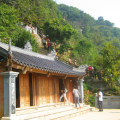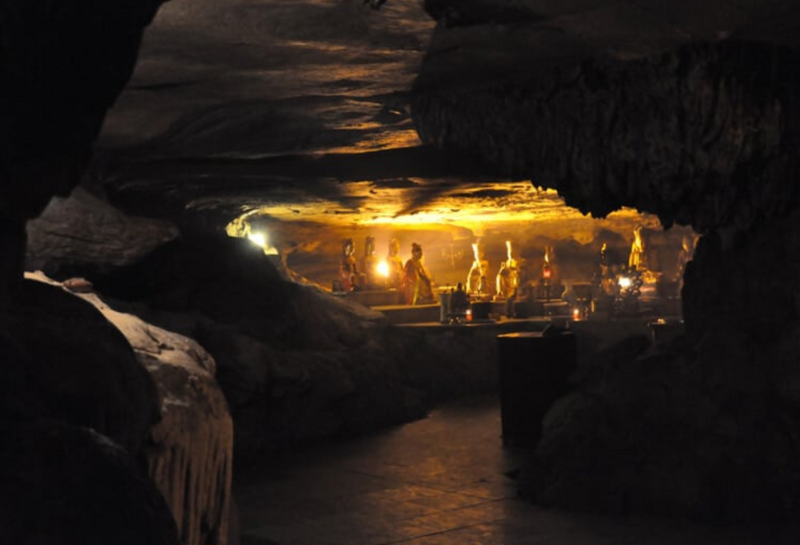This original pagoda is a collection of smaller temples and grottoes nestled within the natural caves of the limestone hills. Here, amidst the stalactites and stalagmites, Buddhist deities and mountain spirits are venerated, creating a more intimate and historically resonant spiritual space.
On January 6 (1943 – 1944), the general Tran Tu Binh chose Bai Dinh mountain as the revolutionary base of Quynh Luu, he called on all people to rise up against the war and contribute to the victory of the August Revolution in 1945. Therefore, the 6th of every year is the temple festival day.
In 1997, the temple was recognized as a national historical and cultural revolutionary relic.
In 2003, building upon the foundation and history of the ancient pagoda, Xuan Truong Construction Enterprise generously contributed to the restoration and expansion of the temple with a total area of over 1000 hectares.
From January to March of the lunar calendar (generally from February to April of the western calendar) when the weather is warm is also the best time to go to Bai Dinh Pagoda, Ninh Binh Province.
You can combine spring sightseeing, praying for luck at the pagoda and participating in major festivals in both Trang An and Bai Dinh. However, this is also the peak tourist season, so the number of visitors here is very crowded, causing overload and crowding. Therefore, if you are someone who does not like to jostle and be noisy, you can also visit Bai Dinh Pagoda at other times of the year.
Due to the large scale of the pagoda grounds, an electric car service is available for 30,000 VND per trip, which can save significant time.
A boat tour of Trang An takes upwards of three hours, with each boat carrying 4 to 5 people. The boat ticket is priced at 150,000 VND per person. During peak periods, Trang An is a popular destination, so expect crowds and potential delays when purchasing tickets and boarding boats.
Visiting Bai Dinh Pagoda is an experience that blends cultural immersion with spiritual contemplation. The contrast between the ancient, cave-like temples and the grand, record-breaking structures of the new section offers a unique perspective on the evolution of Buddhist architecture and practice in Vietnam.
The serene natural surroundings, with limestone karsts and verdant hills, further enhance the sense of tranquility and awe that permeates this remarkable site, making it a must-visit destination for anyone exploring the cultural and religious heritage of Vietnam.









